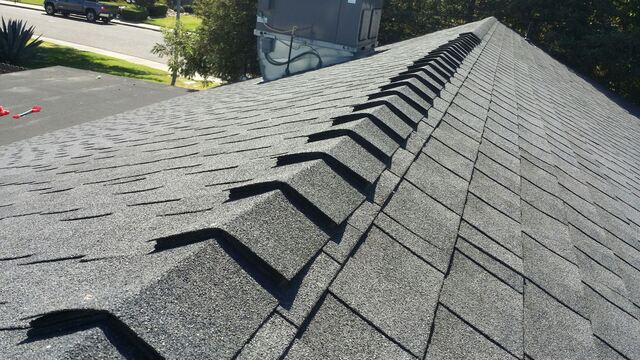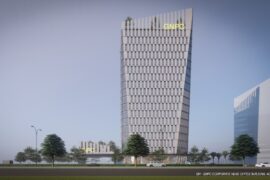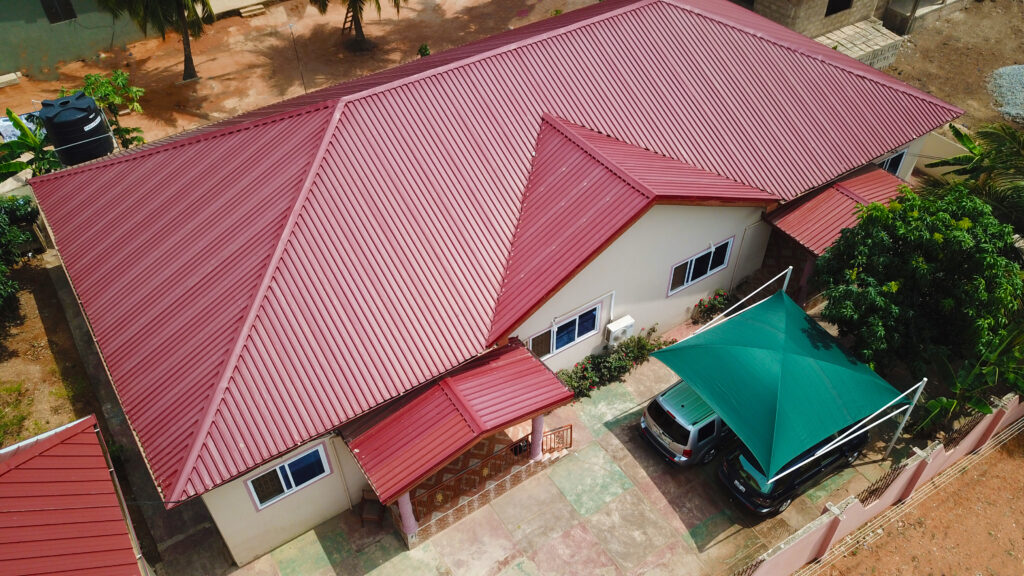When it comes to selecting the ideal roof shingles for your building project, the task may seem like a walk in the park. However, there are several considerations to keep in mind that might make this process a bit more complex than you initially thought. From taking into account the climate of your area to considering the style and aesthetics of your building, there are various factors that play a crucial role in making the right choice. So, before you embark on this journey of roof shingle selection, let’s explore the key factors together that will help you make an informed decision and ensure the longevity and durability of your roof.
Climate Considerations
When considering the climate in which you live, it is important to make an informed decision about the type of roof shingles that will best withstand the environmental conditions. The choice of roof shingles can significantly impact the energy efficiency and environmental impact of your building.
Energy efficiency is a key consideration when selecting roof shingles. Certain types of shingles, such as cool roof shingles, are designed to reflect more sunlight and absorb less heat. This helps to reduce the amount of heat transferred into your home, resulting in lower cooling costs during hot seasons. By choosing energy-efficient roof shingles, you can decrease your reliance on air conditioning and save on energy consumption.
The environmental impact of roof shingles should also be taken into account. Traditional asphalt shingles, for example, contribute to landfill waste as they are not easily recyclable. In contrast, some newer shingle materials, like metal or solar shingles, offer more environmentally friendly options. Metal shingles are often made from recycled materials and can be recycled again at the end of their lifespan. Solar shingles, on the other hand, harness solar energy to generate electricity, reducing the reliance on fossil fuels.
Building Style and Aesthetics
When considering roof shingles, it is important to take into account the architectural compatibility of your building style. Different shingle styles and designs can enhance the overall aesthetics of your home or commercial property. Additionally, the color and texture choices you make can further contribute to the desired look and feel of your roof. By carefully selecting roof shingles that complement your building style, you can achieve a cohesive and visually appealing result.
Architectural Compatibility
To ensure architectural compatibility, consider the building style and aesthetics when choosing roof shingles. Architectural trends and historical preservation play a significant role in determining the appropriate shingles for your building project. By selecting roof shingles that complement the architectural style, you can enhance the overall aesthetics and maintain the historical integrity of the structure. For example, if you are working on a Victorian-style building, it is advisable to opt for shingles that replicate the authentic materials and design elements of that era. On the other hand, if you are constructing a modern, minimalist structure, sleek and contemporary shingles would be a better fit. By carefully considering the architectural style and trends, you can ensure that your chosen roof shingles harmonize with the overall design and enhance the visual appeal of your building.
Color and Texture Choices
Considering the building style and aesthetics, the color and texture choices of roof shingles are crucial in ensuring a harmonious and visually appealing design. When selecting the color of your roof shingles, it is important to take into account the overall look and feel of your building. Opting for neutral colors like gray, black, or brown can provide a timeless and classic appearance. However, if you prefer a more bold and vibrant look, you can explore options like reds, blues, or greens. Additionally, it is essential to consider the texture of the shingles. Traditional asphalt shingles offer a smooth and uniform appearance, while architectural shingles can provide depth and dimension to your roof. It is also worth noting that roofing trends are leaning towards sustainable materials that have a minimal environmental impact.
Material Options
When it comes to choosing roof shingles, there are several popular materials to consider. Each material has its own pros and cons, and understanding these can help you make an informed decision. From traditional asphalt shingles to more durable options like metal or slate, exploring the different material options will allow you to find the best fit for your roofing needs.
Popular Roofing Materials
There are several popular roofing materials available for homeowners to choose from. When it comes to roof shingle types, you have a wide range of options to consider. One of the most popular materials is asphalt shingles. They are affordable, durable, and come in a variety of colors and styles. Another popular choice is metal roofing, which offers excellent durability and longevity. Metal roofs can withstand harsh weather conditions and are fire-resistant. If you’re looking for a more eco-friendly option, consider choosing solar shingles. These shingles are designed to generate electricity and can help reduce your energy costs. Other popular roofing materials include wood shingles, slate tiles, and clay tiles. When it comes to roofing material selection, it’s important to consider factors such as cost, durability, aesthetics, and maintenance requirements.
Pros and Cons
If you’re weighing your options for roofing materials, it’s important to understand the pros and cons of each choice. Here are some key points to consider:
Asphalt shingles: Most common and affordable option. Easy to install and maintain, but not the most durable or energy efficient.
Metal shingles: Highly durable and fire resistant. Can be more expensive upfront, but have a longer lifespan and are more energy efficient.
Wood shingles: Offer a natural and rustic look. Can be prone to rot and require regular maintenance. Not the most energy efficient option.
Slate shingles: Extremely durable and fire resistant. Can be quite expensive and require specialized installation. Offers good energy efficiency.
Clay or concrete tiles: Provide a unique and aesthetically pleasing appearance. Durable and long-lasting, but heavy and may require additional structural support. Good energy efficiency.
Consider the energy efficiency and environmental impact of each material when making your decision.
Durability and Longevity
To ensure the durability and longevity of your roof, it is crucial to select shingles that are engineered to withstand the elements and provide long-lasting protection for your home. When it comes to durability, it is important to consider the materials used in the shingles. Asphalt shingles are a popular choice due to their strength and resistance to harsh weather conditions. They are designed with multiple layers that provide added protection against wind, rain, and hail. Metal shingles, on the other hand, are known for their exceptional durability and resistance to fire, rot, and insect damage. They can last up to 50 years or more with minimal maintenance. Another factor to consider is the shingles’ ability to withstand UV rays and maintain their color over time. Certain shingles are treated with special coatings that increase their energy efficiency by reflecting sunlight and reducing the heat absorbed into your home. This not only helps to keep your home cooler in the summer but also reduces your energy bills. Additionally, it is important to consider the environmental impact of the shingles you choose. Look for shingles that are made from recycled materials or are themselves recyclable at the end of their lifespan. This helps to reduce waste and minimize your carbon footprint. By selecting shingles that are engineered for durability and longevity, you can ensure that your roof provides long-lasting protection for your home while also being energy efficient and environmentally friendly.
Cost and Budgeting
When considering the cost and budgeting of roof shingles, it is important to evaluate the long-term value and potential savings they can provide. While upfront costs may vary, it is crucial to look beyond the initial investment and consider the long-term benefits. Here are some key factors to consider when evaluating the cost and budgeting of roof shingles:
Energy Efficiency: Investing in energy-efficient roof shingles can lead to significant savings on your energy bills. These shingles are designed to reflect sunlight and reduce heat absorption, keeping your home cooler in the summer and reducing the need for excessive air conditioning.
Warranty Coverage: Look for roof shingles that come with a comprehensive warranty. This will provide protection against defects and ensure that you are covered in case of any issues that may arise.
Lifespan: Consider the lifespan of the roof shingles you are considering. While some may have a lower upfront cost, they may also have a shorter lifespan, requiring more frequent replacements and ultimately costing you more in the long run.
Maintenance: Evaluate the maintenance requirements of the roof shingles. Choose shingles that are easy to clean and maintain, as this will save you time and money in the future.
Installation Costs: Take into account the cost of installation when budgeting for roof shingles. Hiring a professional roofing contractor may increase the upfront cost but can ensure proper installation and prevent future issues.
Installation and Maintenance Factors
Considering the importance of proper installation and regular maintenance, it is crucial to understand the key factors that impact the longevity and performance of roof shingles. When it comes to installation techniques, it is essential to follow the manufacturer’s guidelines and recommendations. This includes using the correct number and type of nails, ensuring proper alignment and overlap, and using appropriate adhesive or sealant. Incorrect installation can lead to leaks, wind damage, and premature shingle failure.
Regular maintenance is also vital for preserving the condition of roof shingles. One of the most important maintenance tips is to regularly inspect the roof for any signs of damage or wear. This includes checking for loose or damaged shingles, cracks, or missing granules. It is also important to keep the roof clean and clear of debris, as buildup can promote moisture retention and accelerate shingle deterioration.
Additionally, it is advisable to trim overhanging tree branches to prevent them from rubbing against the roof and causing damage. Regular gutter cleaning is essential to prevent water backup and potential damage to the shingles. Lastly, it is recommended to have a professional roofing contractor perform an annual inspection to identify and address any potential issues before they become major problems.
Frequently Asked Questions
Are There Any Specific Shingle Options That Are More Resistant to Severe Weather Conditions Such as Hurricanes or Heavy Snowfall?
When it comes to severe weather conditions like hurricanes or heavy snowfall, it is important to choose shingles that are resistant to these elements. Look for hurricane resistant shingles, which are designed to withstand high winds and flying debris. Additionally, consider snow resistant shingles that can handle the weight of heavy snow without getting damaged. These types of shingles are specifically engineered to provide the necessary durability and protection for your building project in extreme weather conditions.
Can I Install Solar Panels on Top of My Roof Shingles Without Affecting Their Durability or Longevity?
When installing solar panels on top of your roof shingles, it’s important to consider the impact on shingle durability. The weight and installation process of the panels can potentially affect the lifespan of the shingles. To ensure the longevity of your roof, it’s recommended to consult with a professional contractor who can assess your specific situation and provide guidance on the best installation methods for your roof. This will help minimize any potential damage and ensure the durability of your shingles.
Are There Any Eco-Friendly Shingle Options Available That Can Help Reduce My Building’s Carbon Footprint?
When considering eco-friendly roofing options, it’s important to explore the benefits of sustainable shingles. These shingles are designed to reduce your building’s carbon footprint by using materials that are recycled or renewable. By choosing eco-friendly shingles, you can contribute to a more sustainable environment while still maintaining the durability and longevity of your roof. These shingles are a smart choice for those looking to make a positive impact on the planet and prioritize sustainability in their building projects.
How Do I Ensure That the Shingle Color and Style I Choose Complements the Existing Exterior Design of My Building?
When choosing the shingle color for your building, you must decide whether you want to match or contrast with the existing exterior design. Matching colors can create a cohesive look, while contrasting colors can add visual interest. Consider the style of your building as well. Traditional shingle styles may be more suitable for older or classic designs, while modern shingle styles can complement contemporary architecture. By carefully considering both color and style, you can ensure that your shingles enhance the overall aesthetic of your building.
What Type of Maintenance Is Required for Different Shingle Materials, and How Often Should It Be Performed to Maximize Their Lifespan?
To extend the lifespan of your roof shingles, proper maintenance is crucial. Different shingle materials require specific care. Asphalt shingles should be inspected annually for damage or granule loss. Clean moss or algae growth to prevent moisture damage. For wood shingles, regular inspections for rot or splitting are essential. Apply preservatives or stains to protect against weathering. Metal shingles need occasional cleaning to remove debris and prevent corrosion. Regular maintenance, tailored to your shingle material, will ensure a longer-lasting roof.
Conclusion
In conclusion, choosing the right roof shingles for your building project requires careful consideration of various factors. Climate considerations, building style, and aesthetics should be taken into account to ensure a suitable choice. Material options, durability, and longevity are important for long-term performance. Cost and budgeting should be weighed against the desired quality and lifespan. Lastly, proper installation and maintenance factors are crucial for the longevity and functionality of your roof. By considering these aspects, you can make an informed decision and select the most suitable roof shingles for your project.
Discover more from Ghana Scoop
Subscribe to get the latest posts sent to your email.





